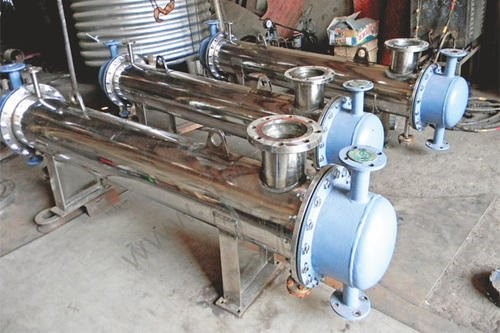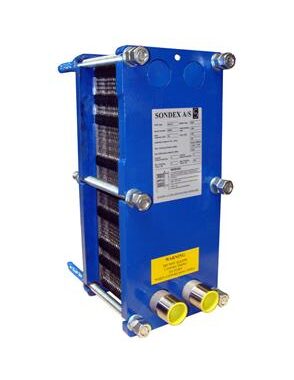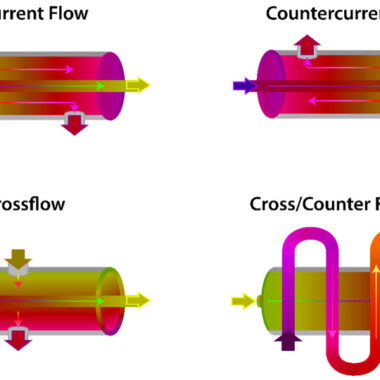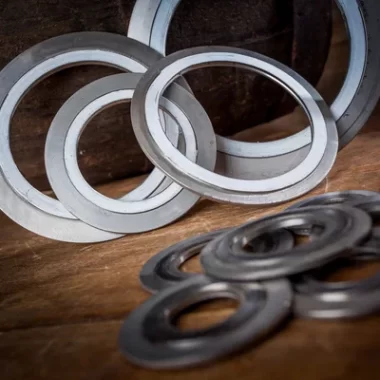Explore different types of Heat Exchangers
Explore different types of heat exchangers
Explore different types of Heat Exchangers : Heat exchangers come in different plans to suit diverse applications and working conditions. The most types incorporate shell and tube, plate, finned tube, air-cooled, and regenerative warm exchangers. Here’s an in-depth investigation of these types:
1. Shell and Tube Warm Exchangers
Design:
Comprise of a series of tubes, one set carrying the hot fluid and the other the cold fluid. These tubes are encased in a cylindrical shell.
Types:
- Fixed Tube Sheet: Tubes are settled to the shell at both ends.
- Floating Head: One conclusion of the tube bundle is free to grow and contract, permitting for thermal expansion.
- U-Tube: Tubes are bent into a U-shape, permitting for thermal expansion and easy cleaning.
Advantages:
- Suitable for high-pressure applications.
- Strong plan and huge surface area for heat transfer.
- Simple to clean and maintain, particularly U-tube designs.
Disadvantages:
- Bulky and requires significant space.
- Higher cost compared to a few other types.
Applications:
Power plants, petrochemical industries, oil refineries, and chemical handling.
2. Plate Heat Exchangers (PHEs)
Design:
Comprise of numerous thin, corrugated plates stacked together, making a series of parallel flow channels for the fluids.
Types:
- Gasketed Plate Heat Exchangers: Plates are fixed with gaskets.
- Brazed Plate Heat Exchangers: Plates are brazed together, shaping a compact and leak-proof unit.
- Welded Plate Heat Exchangers: Plates are welded, eliminating the require for gaskets.
- Double-Wall Plate Heat Exchangers: Two plates are bonded together for extra protection against liquid blending.
Advantages:
- Tall thermal efficiency and compact plan.
- Simple to grow capacity by including more plates.
- Appropriate for low to medium weight applications.
Disadvantages:
- Gasketed plans are constrained by gasket fabric compatibility and temperature/pressure ratings.
- Brazed and welded plans can be difficult to clean.
Applications:
HVAC systems, nourishment and beverage preparing, pharmaceuticals, and refrigeration systems.
3. Finned Tube Heat Exchangers
Design:
Tubes are equipped with fins to extend the surface range for heat transfer. The fins can be remotely joined to the tubes or coordinates during fabricating.
Types:
- Necessarily Fin Tubes: Fins are an fundamentally part of the tube divider.
- Wound Fin Tubes: Fins are wound around the tube.
- Extruded Fin Tubes: Balances are extruded from the tube fabric.
Advantages:
- Expanded heat transfer productivity due to bigger surface zone.
- Appropriate for gas-to-liquid heat trade.
Disadvantages:
- More complex and costly manufacturing prepare.
- Can be difficult to clean.
Applications:
Air conditioning and refrigeration, car radiators, and industrial heat recovery systems.
4. Air-Cooled Heat Exchangers
Design:
Utilize air as the cooling medium rather than water. Comprise of finned tubes with fans to enhance air flow over the tubes.
Advantages:
- Don’t require water, making them perfect for arid districts.
- Lower operational costs due to the end of water handling and treatment.
Disadvantages:
- Bigger impression compared to water-cooled systems.
- Productivity can be influenced by surrounding air temperature and climate conditions.
Applications:
Power plants, chemical preparing, oil and gas refineries, and HVAC systems.
5. Double Pipe Heat Exchangers
Design:
Comprise of two concentric channels, one interior the other. The hot liquid streams through the inner pipe, whereas the cold liquid flows through the annular space between the two pipes.
Advantages:
- Straightforward plan and simple to preserve.
- Suitable for small-scale applications and where space is restricted.
Disadvantages:
- Limited heat exchange zone compared to other plans.
- Not reasonable for large-scale industrial applications.
Applications:
Little industrial forms, heating and cooling of liquids in research facilities, and pilot plants.
Conclusion
Diverse types of heat exchangers are outlined to meet particular requirements in different applications. Shell and tube, plate, finned tube, air-cooled, double pipe, and regenerative heat exchangers each have interesting highlights, focal points, and restrictions. Understanding these characteristics makes a difference in selecting the fitting heat exchanger type for your particular needs, guaranteeing ideal execution, productivity, and sustainability in thermal administration forms.






Compare and contrast various heat exchanger designs - Cool Fab Equipments July 09, 2024 at 8:31 pm
[…] Heat exchangers are devices outlined to effectively transfer heat from one fluid to another. They are broadly utilized in different businesses, counting control era, refrigeration, air conditioning, and chemical preparing. Two basic components affecting the execution of heat exchangers are fluid stream and surface area. Let’s dig into compare and contrast various heat exchanger designs and how they influence heat exchange effectiveness. […]